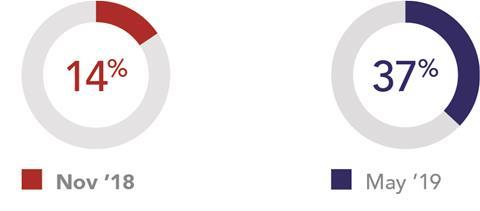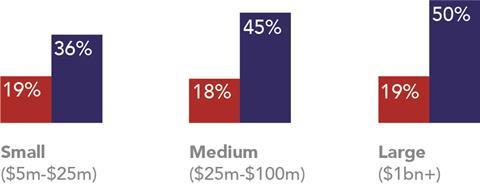Delphine Leroy, Director of CNA Hardy, France (pictured) reviews the key findings of CNA Hardy’s latest Global Risk & Confidence Survey, and looks at how technology is bringing new opportunities as well as new risks.
Technology Investment on the Rise
70% of business leaders in Continental Europe are confident in their ability to prosper, with the vast majority prioritising Technology and R&D investment to support their growth ambitions. Technology has the potential to do everything; drive efficiency, profitability, innovation and closer customer interaction. Artificial intelligence (AI), for example, is set to transform the speed of everything from medical diagnosis to detecting crime.
Tech and Cyber Risks Increase
As the reliance on technology increases so too does the risk of investing the wrong tech systems or creating complicated systems that could make companies inefficient, uncompetitive or become quickly outdated. Similarly, these highly bespoke and complex tech systems are also an increased risk to cyber-attacks and can easily be disabled by ransomware or hacking - it’s easy to why Tech risk is rising; 14% of business leaders ranked it as their top risk in November 2018, and 37% expected it to rise further in 2019. Businesses’ growing dependence on technology is both a strength and a weakness. It is critical companies build appropriate resilience into business modifications.

Companies who view Tech as their top concern.
Cyber Threats rises as Tech dependency increases
By May ’19, it is expected that Cyber risk takes centre stage as the top risk globally, with almost half (49%) of executives saying it is set to increase. While wisdom suggests it is the smaller and mid-size corporates that are least prepared for cyber threats, our data shows that it is the larger companies that are most concerned, despite having more resources and insight to deal with the issue.

Companies by size ranking Cyber risk.
Small and medium sized companies are not viewing Cyber as a priority as they appear to feel less vulnerable to risk. We need to do more to highlight the risk of Cyber to businesses of all sizes, or the gap between risk and mitigation, exposure and cover will continue to grow. The Insurance industry has a key role to play in helping companies of all sizes to get that risk management right, both in prevention and incident response.
Companies must prepare for interconnected risks
Despite this rising awareness of Tech and Cyber risks, many companies are unable to make the connection of risk and how one incident can cause a domino effect. For example, a cyber-attack can paralyse a manufacturing plant, shut down a global supply chain, putting revenues of multiple businesses at risk and undermine a brand’s reputation. Companies must consider their interconnected risks, and their growing dependence on technology is both a strength and a weakness: tech dependence > cyber incident > supply chain impact > regulatory breach > reputation damage. Significant time, resource and money will also be required to settle legal costs and claims for related businesses and customers, not to mention the untold cost of a damaged reputation.
Increased technology dependence and the associated cyber danger is impacting risk across all parts of business, and is changing the overall risk profile for companies as we speak, becoming a priority that ranks alongside (and sometimes above) the protection of a company’s physical assets. This is a profound shift, and one that companies and insurers both need to spend time analysing together.
To avoid the pitfalls, a better dialogue around loss prevention and risk engineering needs to be top of the agenda for risk managers, their brokers and insurers. At CNA Hardy, our expert underwriters, claims and risk control teams create insurance solutions for businesses across Europe and the globe. We can show you more. www.cnahardy.com
By Delphine Leroy, Director of CNA Hardy, France
This article is supported by




















